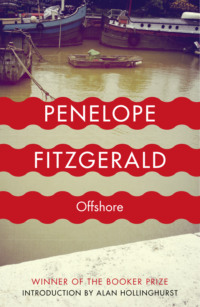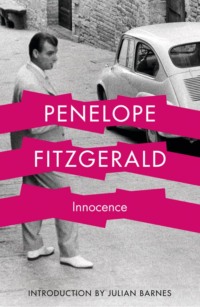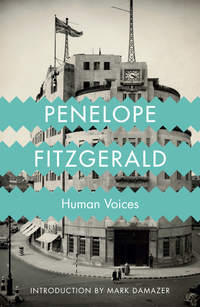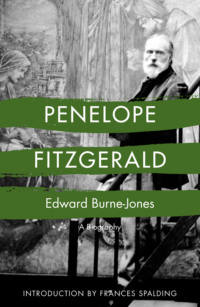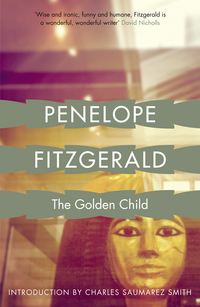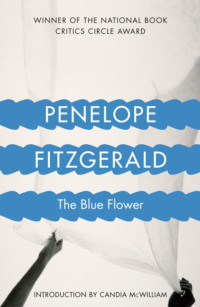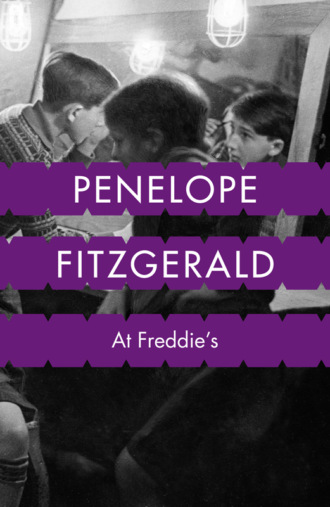
Полная версия
At Freddie’s

At Freddie’s
Penelope Fitzgerald

From the reviews of At Freddie’s
‘The wit is crisp and dry, scenes and characters are deftly skewered. Whether you view the theatre as a noble passion or a wasting disease, you are equally certain to be regaled.’
Guardian
‘Enjoy the knowingness of the awful children, the weary fumblings of the professional actors, the constant witticisms at the expense of pretentious directors. An enjoyable, sharp novel … a delicious refreshment.’
Margaret Forster
Contents
Cover
Title Page
From the reviews of At Freddie’s
Penelope Fitzgerald: Preface by Hermione Lee, Advisory Editor
Introduction
Dedication
Chapter 1
Chapter 2
Chapter 3
Chapter 4
Chapter 5
Chapter 6
Chapter 7
Chapter 8
Chapter 9
Chapter 10
Chapter 11
Chapter 12
Chapter 13
Chapter 14
Chapter 15
Chapter 16
Chapter 17
By the Same Author
Copyright
About the Publisher
Penelope Fitzgerald
Preface by Hermione Lee, Advisory Editor
When Penelope Fitzgerald unexpectedly won the Booker Prize with Offshore, in 1979, at the age of sixty-three, she said to her friends: ‘I knew I was an outsider.’ The people she wrote about in her novels and biographies were outsiders, too: misfits, romantic artists, hopeful failures, misunderstood lovers, orphans and oddities. She was drawn to unsettled characters who lived on the edges. She wrote about the vulnerable and the unprivileged, children, women trying to cope on their own, gentle, muddled, unsuccessful men. Her view of the world was that it divided into ‘exterminators’ and ‘exterminatees’. She would say: ‘I am drawn to people who seem to have been born defeated or even profoundly lost.’ She was a humorous writer with a tragic sense of life.
Outsiders in literature were close to her heart, too. She was fond of underrated, idiosyncratic writers with distinctive voices, like the novelist J. L. Carr, or Harold Monro of the Poetry Bookshop, or the remarkable and tragic poet Charlotte Mew. The publisher Virago’s enterprise of bringing neglected women writers back to life appealed to her, and under their imprint she championed the nineteenth-century novelist Margaret Oliphant. She enjoyed eccentrics like Stevie Smith. She liked writers, and people, who stood at an odd angle to the world. The child of an unusual, literary, middle-class English family, she inherited the Evangelical principles of her bishop grandfathers and the qualities of her Knox father and uncles: integrity, austerity, understatement, brilliance and a laconic, wry sense of humour.
She did not expect success, though she knew her own worth. Her writing career was not a usual one. She began publishing late in her life, around sixty, and in twenty years she published nine novels, three biographies and many essays and reviews. She changed publisher four times when she started publishing, before settling with Collins, and she never had an agent to look after her interests, though her publishers mostly became her friends and advocates. She was a dark horse, whose Booker Prize, with her third novel, was a surprise to everyone. But, by the end of her life, she had been shortlisted for it several times, had won a number of other British prizes, was a well-known figure on the literary scene, and became famous, at eighty, with the publication of The Blue Flower and its winning, in the United States, the National Book Critics Circle Award.
Yet she always had a quiet reputation. She was a novelist with a passionate following of careful readers, not a big name. She wrote compact, subtle novels. They are funny, but they are also dark. They are eloquent and clear, but also elusive and indirect. They leave a great deal unsaid. Whether she was drawing on the experiences of her own life – working for the BBC in the Blitz, helping to make a go of a small-town Suffolk bookshop, living on a leaky barge on the Thames in the 1960s, teaching children at a stage school – or, in her last four great novels, going back in time and sometimes out of England to historical periods which she evoked with astonishing authenticity – she created whole worlds with striking economy. Her books inhabit a small space, but seem, magically, to reach out beyond it.
After her death at eighty-three, in 2000, there might have been a danger of this extraordinary voice fading away into silence and neglect. But she has been kept from oblivion by her executors and her admirers. The posthumous publication of her stories, essays and letters is now being followed by a biography (Penelope Fitzgerald: A Life, by Hermione Lee, Chatto & Windus, 2013), and by these very welcome reissues of her work. The fine writers who have provided introductions to these new editions show what a distinguished following she has. I hope that many new readers will now discover, and fall in love with, the work of one of the most spellbinding English novelists of the twentieth century.
Introduction
I first encountered At Freddie’s – and its author – in curious, rather Penelopean (or should that be Fitzgeraldian?) circumstances. Sometime in 1987, I received a letter from a certain Jerry Epstein, hitherto unknown to me, telling me to get in touch with him, when I would hear something to my advantage. He had, he told me, acquired the rights to At Freddie’s, and he believed that I (who had never written or directed a film before) was the ideal – the only – person to write and direct it. Jerry was short, bearded and oddly shapeless, like a lump of clay abandoned by the sculptor before he had completed his task, but enthusiasm and big laughter exploded out of him. It turned out that he had directed a well-regarded film of Elmer Rice’s 1923 play The Adding Machine, but his great claim to fame was that he had been Charlie Chaplin’s last producer; he made everything seem not only possible, but imminent. I walked away from the meeting thinking that Orson Welles’s mantle of actor-director-writer was about to descend on me, and set about reading the book, and everything else by its author that I could get my hands on.
Is there any pleasure greater than discovering a writer of whose existence you have been unaware, but who turns out to be absolutely on your wavelength? It’s like making a new friend. No, it is making a new friend, and Penelope Fitzgerald was immediately my new best friend. In particular, At Freddie’s (1982) might have been written for me personally, I felt. It distilled an aspect of the theatre for which I have always had a special affection: the shabby, peripheral hinterland of the stage, away from the great triumphs and the brightest lights, its denizens, obliquely touched by association with that glamorous world, doing their plucky best to impersonate their famous originals, on stage and in life. This hinterland is an essential part of the theatre’s ecology, and Miss Fitzgerald had miraculously captured the feel of it in her gallery of B-list theatrical characters: quirky, touching, their hopes and dreams all doomed but all nonetheless lit up by their devotion to the idea of the theatre. As in many of her novels that I had just gobbled up, in At Freddie’s Miss Fitzgerald purveyed a most unusual quality, an admiring affection for the peccadilloes and eccentricities of the people she had created which amounted to a sort of understated, wry romanticism. I could scarcely wait to turn it into a film which, though scarcely aspiring to blockbuster status, might illuminate a unique corner of human experience within a deliciously shabby theatrical frame, like a peeling proscenium arch. I duly knocked off a treatment which sought to recreate that world before the great juggernauts of theatre – the National Theatre and the Royal Shakespeare Company – had loomed into view, in a Covent Garden (where most of the action is set) which was still a flower and vegetable market, its destiny as a tourist trap not yet even dimly glimpsed.
My collaboration with Jerry Epstein was not without its conflicts. They hinged on one fundamental difference: I wanted to film Fitzgerald’s book in all its loving subtleties, whereas Jerry saw it as a mere starting point for a series of generic scenes, broad comic sketches and vaguely transatlantic sentimentality. I could never quite understand why he had approached me to be his collaborator. After each script meeting at which he would enthusiastically acclaim my every suggestion, I would laboriously write them up and despatch them to him (no laptops, then, no email). He would phone me with tears in his voice to tell me how fabulous every etched line of mine was, what a natural screenwriter, what a superbly human and insightful artist I was. He would just have my clumsily bashed-out pages typed up into proper movie-script format and we’d be ready to go. An impressively authentic-seeming screenplay would duly arrive on my doormat bearing not even a vague resemblance to anything I – or indeed Penelope Fitzgerald – had written.
At some point he arranged for me to meet the admired and now increasingly popular novelist. He decided, to my considerable relief, that it would be better if we were to meet without him. For some reason we ended up in the old Palm Court of the Waldorf Hotel in Aldwych, not far, as it happens, from the purported location of the school and next door to the theatre where the novel’s climactic scene is set. The Palm Court suited Penelope very well, the sedate choreography of the participants in the thé dansant belying what she assured me were smouldering adulterous liaisons. She was middle-aged, delicate-featured, fragrant, her attire pastel-hued and floral-patterned; her all-seeing eyes a little dreamy, almost veiled, her smile witty. There was nothing even remotely theatrical about her. She answered all my questions about the experiences that had led to the writing of the book, above all her time as an English teacher at the Italia Conti stage school, but it was very clear that – just as she had with the BBC in her exquisite earlier novel Human Voices – she had distilled and enriched her material to create an essence of a very quirky organisation, evoking both its absurdity and its splendour. In the case of At Freddie’s, she had osmotically understood something of the theatre’s compromised mystery, its tawdry power.
She observes with an insider’s eye, though as I now discovered she was not an insider at all. A remarkable gift of empathy, or perhaps even of identification, informs her portrait of a now long-vanished world of dashing but feckless leading men, of gin-sodden classical actors, of theatrical garden parties, now just part of the collective unconscious of the theatre. Absurdly pretentious directors and nauseatingly precocious child actors, on the other hand, remain with us, and no doubt always will. As will genuine talent, to which Fitzgerald pays beautiful homage in the figure of the boy genius, Jonathan Kemp. In her central character, the eponymous Freddie, she has created an archetype, a force of nature, a sort of Mother Courage of juvenile stage schools, endlessly adapting in order to survive. Fitzgerald has no sentimentality about Freddie, though she admires her indomitability: by the last chapter, the old baggage rises above everything and everyone, ruthless and heartless to the end. The grit that so unexpectedly surfaces in Fitzgerald’s exquisitely wrought fictions is right at the heart of At Freddie’s.
I offered the part of Freddie to Alec Guinness, who was tempted but finally declined on the grounds that he thought he’d done enough drag in his career. Instead, I wrote up the part of Ernest Valentine, the old actor-laddie, for him, embroidering it with stories that Alec himself had told me about crumbling old thespians of his youth. I think he might have done it, too, but Jerry somehow never managed to raise any capital. I never knew, of course, which version of the script he had sent to potential backers – his Disney version, Hilarious!!!! and Heartbreaking!!!!, or the altogether more demure, harsher and mysterious Fitzgerald–Callow take. He only gave up on At Freddie’s reluctantly, but he did give up, and I never found a backer who could see any commercial potential in the project.
I saw Penelope a few times during the period of gestation of the screenplay, and then, later, we had an exchange of letters over her superb novel, The Gate of Angels, which I recorded. Writing to me after hearing the recording she thanked me for ‘making it sound a much better novel than I remember having written’. The later work was of exceptional power, complexity and resonance, but At Freddie’s is a superb achievement, simply as a novel in its own right, and, as one of the tiny handful of great theatre novels, up there with Michael Blakemore’s Next Season, Priestley’s Lost Empires and Michael Redgrave’s The Mountebank’s Tale; like them, it is precise about the theatre’s workings and profound about its meaning. I still long to film it.
Simon Callow
2013
Dedication
To Freddie
Конец ознакомительного фрагмента.
Текст предоставлен ООО «ЛитРес».
Прочитайте эту книгу целиком, купив полную легальную версию на ЛитРес.
Безопасно оплатить книгу можно банковской картой Visa, MasterCard, Maestro, со счета мобильного телефона, с платежного терминала, в салоне МТС или Связной, через PayPal, WebMoney, Яндекс.Деньги, QIWI Кошелек, бонусными картами или другим удобным Вам способом.




